 Case Studies
Case Studies
Return to Case StudiesDesigning Beheshti Carpet’s Dealership (Franchise) Structure: From Expansion to Standardization
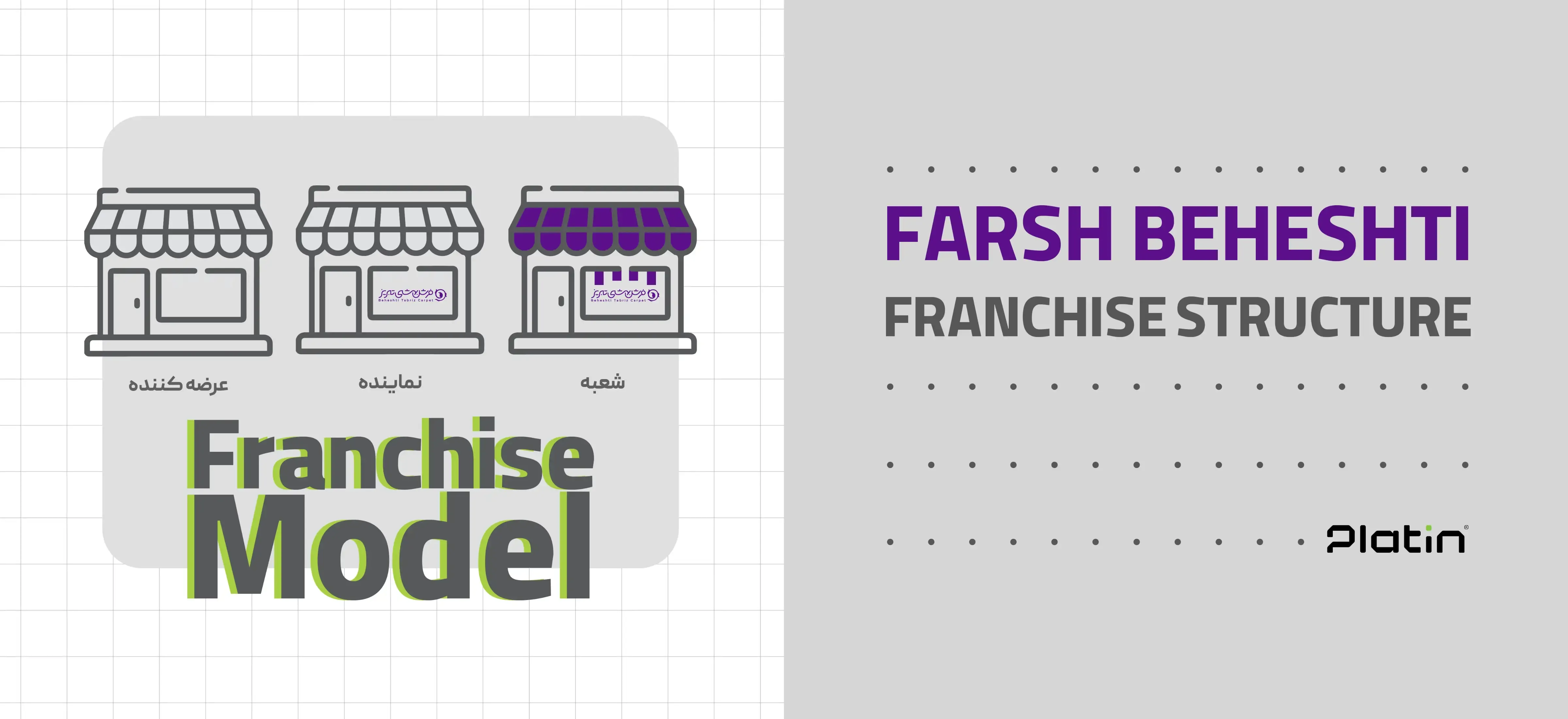
Beheshti Carpet, one of the most reputable brands in Iran’s carpet industry, faced a critical challenge during its expansion journey: growing sales channels without incurring the heavy costs of opening and managing new physical branches.
Launching physical stores across different regions was becoming less viable due to high costs such as rent, space setup, and human resource management.
At this point, Platinum Agency stepped in as a strategic partner to design and develop a standardized franchise (dealership) structure that would allow for rapid, low-cost network expansion. This structure not only enabled the brand to extend its reach but also ensured consistent brand image and quality through clear operational and financial guidelines.
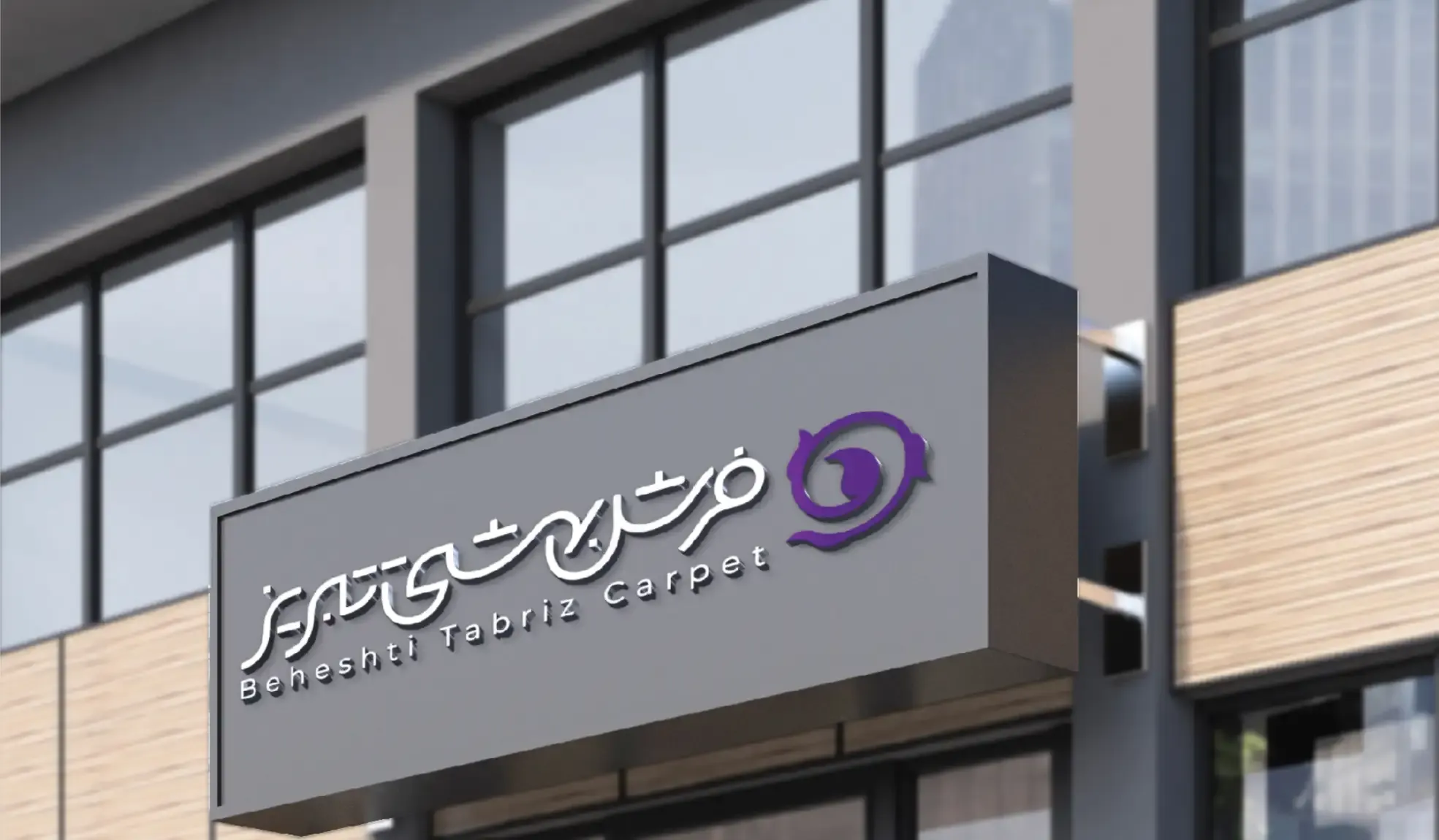
Challenges of Expanding Physical Branches
1. High setup and management costs
Establishing a new physical branch required significant investment — from leasing and outfitting the space to hiring and managing staff. These costs made fast, large-scale growth almost impossible.
2. Operational and HR complexities
Directly managing multiple branches across various cities required complex infrastructure and large teams. HR issues, staff training, and day-to-day coordination placed a heavy burden on the central management team.
3. Risk of brand reputation damage without oversight
Each branch operated under the Beheshti Carpet name, meaning any service failure could harm the brand’s reputation. Without a standardized monitoring system, customer experiences across branches risked becoming inconsistent.
Comparison: Direct Branches vs. Dealerships (Franchises)
Criteria | Direct Branch (Brand-Owned) | Dealership (Franchise) |
| Setup Costs | Very high (rent, full equipment, HR costs) | Lower, most costs borne by the franchisee |
| HR Management | Fully managed by the brand | Managed by the franchisee under brand supervision |
| Growth Speed | Slow and limited | Faster, enabling expansion across multiple cities |
| Brand Risk | Low (full control by the brand) | Medium (requires strict standards and monitoring) |
| Profitability for Brand | Direct but costly | Indirect, with lower fixed costs |
| Marketing Flexibility | Limited to brand policies | Within brand framework, but with franchisee involvement |
Platinum’s Solution: Franchise Model Design
Defining Three Levels of Collaboration
Platinum designed a three-tier collaboration model to help Beheshti Carpet expand its sales channels effectively:
- Brand-Owned Branches:
Fully managed by the brand, with all staff hired and trained directly by Beheshti Carpet. - Franchises (Dealerships):
Independently owned but operating under the mother brand’s framework. Staff training provided by the brand, while financial and HR management handled by the franchisee. - Retailers (e.g., Shahr-e-Farsh):
Retailers only sell Beheshti Carpet products without participating in training or marketing processes.
Collaboration Type | Ownership | Training Responsibility | Financial Model | Marketing Freedom |
| Brand-Owned Branch | Brand | Fully by the brand | Full funding by the brand, no initial buy-in | Limited to brand policies |
| Franchise (Dealership) | Independent franchisee | Initial training by brand, execution by franchisee | Purchase from brand + defined profit margin | Under brand supervision |
| Retailer | Independent retailer | No obligation by brand | Direct purchase with negotiated margin | Almost free, but within brand guidelines |
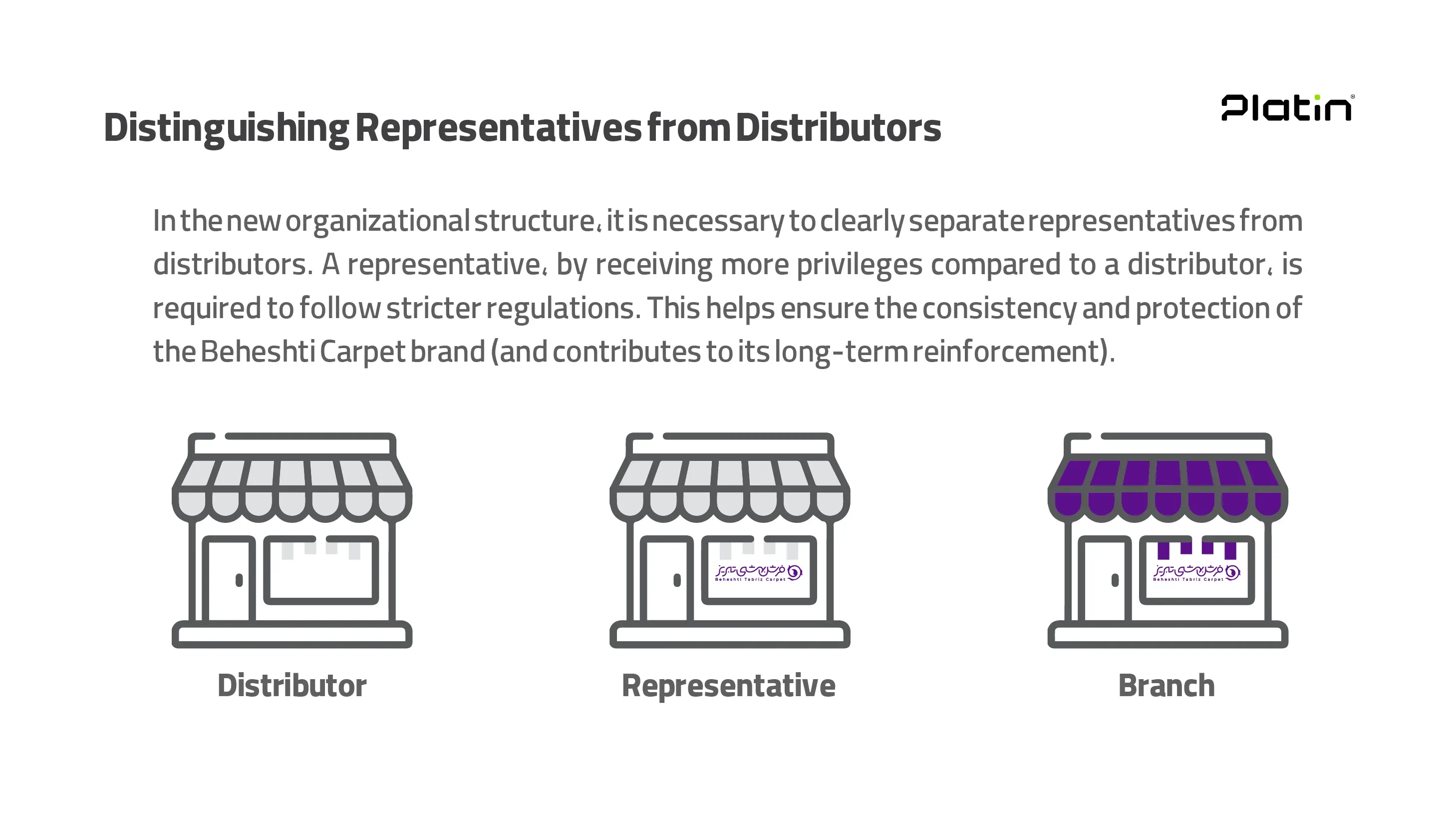
Financial Model and Profit Sharing
After analyzing factory production costs and market dynamics, Platinum developed a fair profit-sharing model:
- Base prices were calculated directly from factory costs.
- Profit margins were defined to ensure sustainability for both the brand and the franchisee/retailer, motivating all parties to grow sales.
This approach enabled network expansion with minimal fixed costs and maximum financial synergy.
Standards and Monitoring
Staff Training for Branches and Dealerships
Maintaining consistent customer experience was a top priority. Platinum created a continuous training system:
- Brand-Owned Branches: Full training provided and managed by the central brand team.
- Franchises: Initial training handled by the brand, while day-to-day management remained with the franchisee.
- Retailers: Only received products without any training obligations.
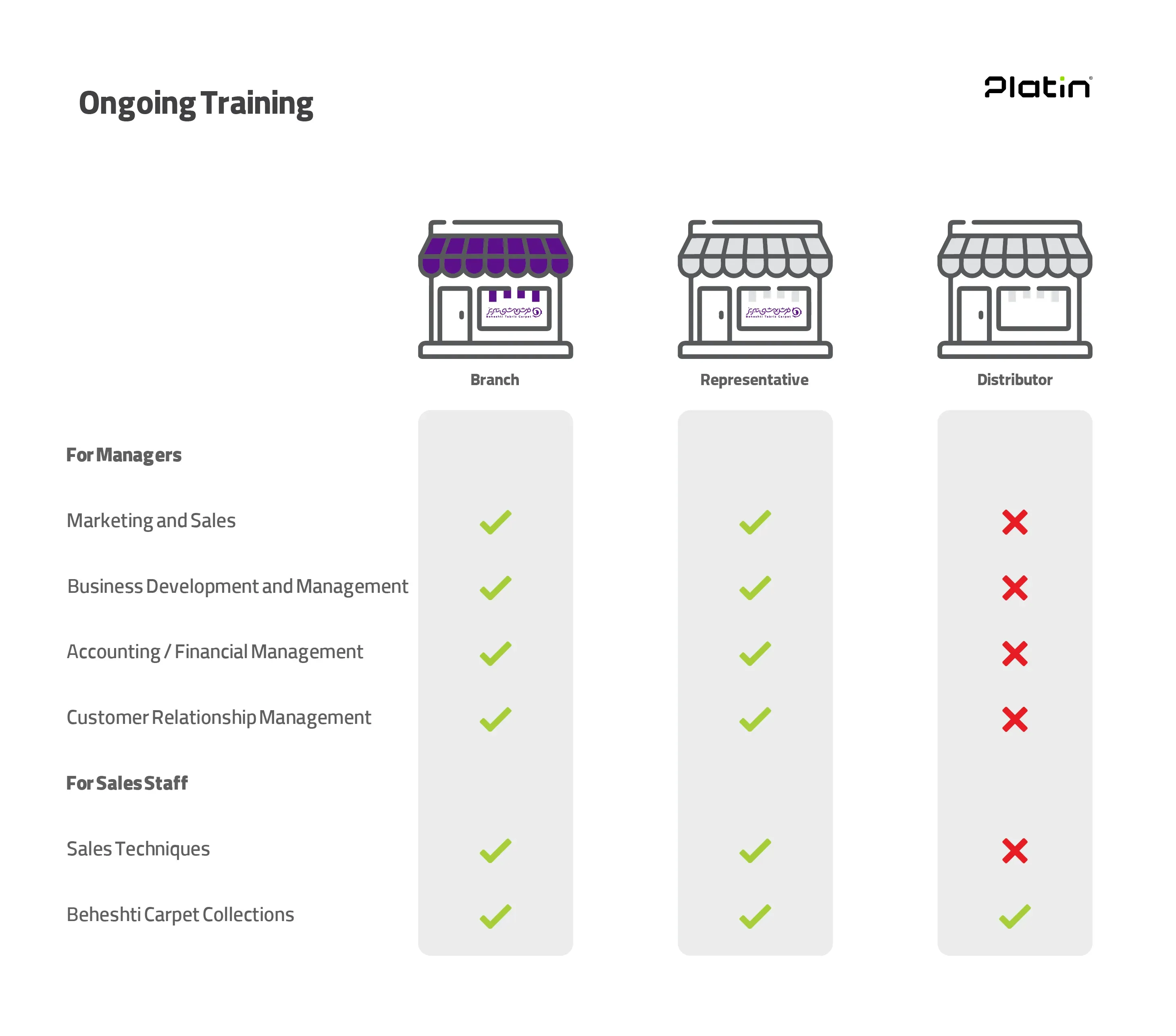
Advertising Policies and Brand Consistency
To prevent harm to brand image, Platinum established clear advertising policies:
- Franchises were not allowed to launch independent campaigns (billboards, digital ads, etc.) without approval from the mother brand.
- All messaging had to align strictly with Beheshti Carpet’s tone and brand identity.
- Any deviation could result in warnings or even a reduction in franchise rights.
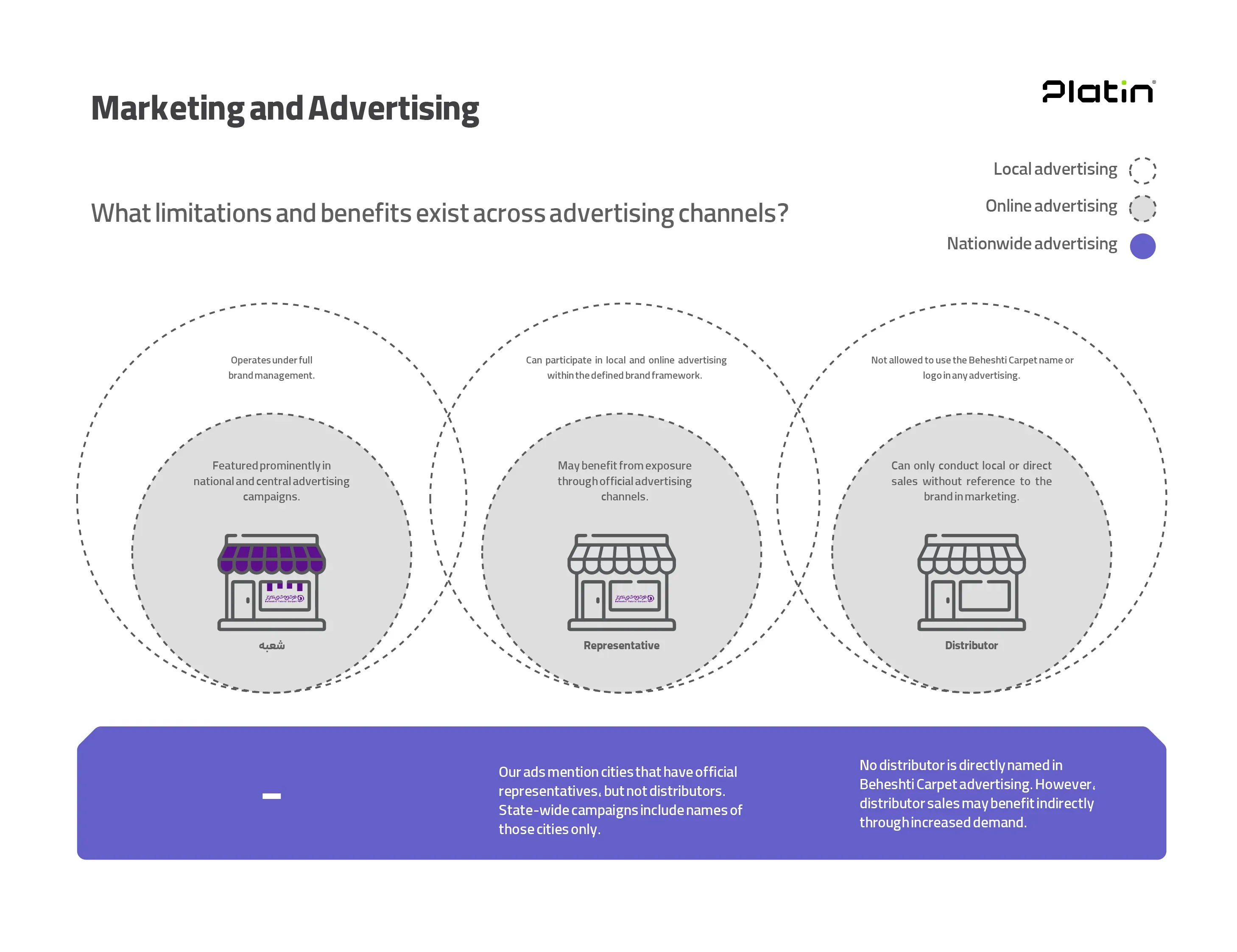
Periodic Monitoring and Scoring System
Platinum designed a monitoring and scoring framework executed on a monthly and quarterly basis:
- Metrics included service quality, adherence to standards, and customer feedback.
- Underperforming franchises risked losing their dealership rights.
- High-performing franchises could graduate to higher levels, such as becoming official brand-owned branches.
Results of Implementing the Franchise Structure
Within just 18 months, Beheshti Carpet achieved impressive milestones through the franchise model designed by Platinum:
30 New Dealerships in 18 Months
The brand expanded its sales network by opening 30 active dealerships in various cities across the country.
3 New Brand-Owned Branches
In addition to the dealerships, three new brand-owned branches were established to serve as central hubs and reference points for other dealerships.
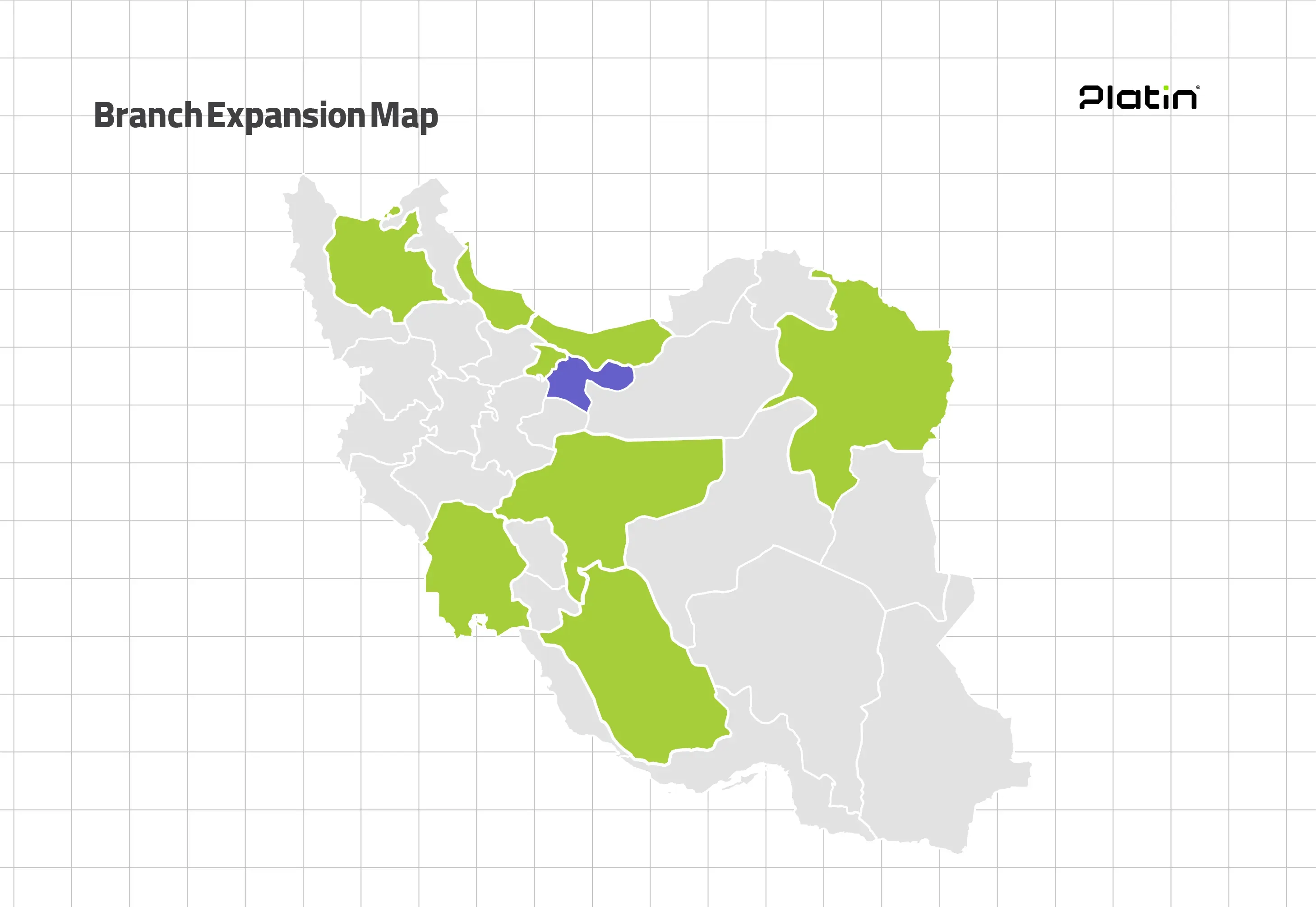
Sales Growth Without a Significant Rise in Fixed Costs
Thanks to this model, Beheshti Carpet increased sales without a dramatic increase in fixed costs such as rent, equipment, or direct HR expenses.
Conclusion
The design and implementation of the franchise model marked a turning point in Beheshti Carpet’s growth journey.
Platinum successfully developed operational, financial, and monitoring frameworks that ensured mutual benefit for both the brand and its franchisees.
The result was sustainable sales growth and a rapidly expanding distribution network, achieved without the heavy financial burden typically associated with large-scale physical expansion.
This case study demonstrates how strategic structuring and standardization can empower brands to scale efficiently while maintaining quality and brand integrity.